Revolutionizing Tech Accessibility: Xpeng G6 Starts at 170,000 Yuan, G9 Top-Tier Model Drops by 140,000 Yuan
![]() 03/20 2025
03/20 2025
![]() 557
557
Before diving into the article, let's pose a question: What are the primary psychological hurdles when deciding to purchase a car?
Most individuals grapple with two significant concerns: price anxiety—fear of overpaying or mismatching features; and quality anxiety—concerns about reliability and safety.
Since He Xiaopeng invited Wang Fengying to oversee the supply chain, combating corruption internally, dismissing inefficiencies, and adopting Lei Jun's CEO-centric approach, Xpeng Motors has undergone a remarkable transformation.
From the MONA M03 and P7+ to the latest G6 and G9 unveiled at the Xpeng Motors Spring Conference, the brand has become synonymous with a safe choice in the automotive world. When faced with indecision among various brands for a new energy vehicle, considering factors like price, intelligent driving, features, electric system, quality, and range, opting for an Xpeng car is a hassle-free decision. The value you receive at this price point is unparalleled.

01
The Significance of Technology Democratization:
From "Exclusive Tech" to "Standard Features for All"
If the new energy vehicle industry were a card game, Xpeng Motors in 2025 would be the one to turn the tables. On March 13, He Xiaopeng announced that the G6 would start at 176,800 yuan and the G9 at 248,800 yuan.
Let's compare the 2025 G6 with the first-generation G6:
2025 G6 price range: 176,800 yuan - 196,800 yuan
2023 G6 price range: 199,900 yuan - 276,900 yuan
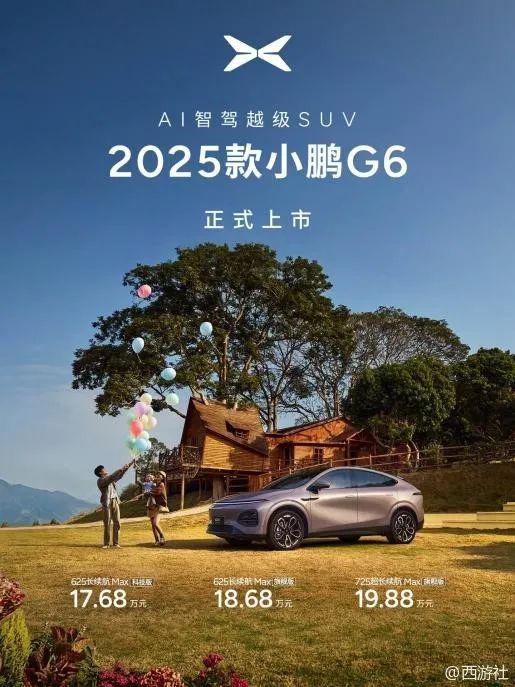
Core Upgrades:
• Turing AI intelligent driving and 5C supercharging AI battery come standard across all trim levels (high-level intelligent driving is standard, with 10 minutes of charging providing 450 kilometers of range).
• Six new exterior colors like Starlit Purple are introduced, the interior is refreshed with low-saturation hues like Deep Space Gray, and three large screens are standard (15.6-inch central control screen + 10.25-inch instrument cluster + streaming media rearview mirror).
• The chassis undergoes a 200 million yuan redevelopment to optimize shock absorption and handling.
For just over 100,000 yuan, you can own such a top-notch mid-size Coupe SUV.

Now, let's contrast the 2025 G9 with the first-generation G9:
2025 G9 price range: 248,800 yuan - 278,800 yuan
2022 G9 price range: 309,900 yuan - 419,900 yuan
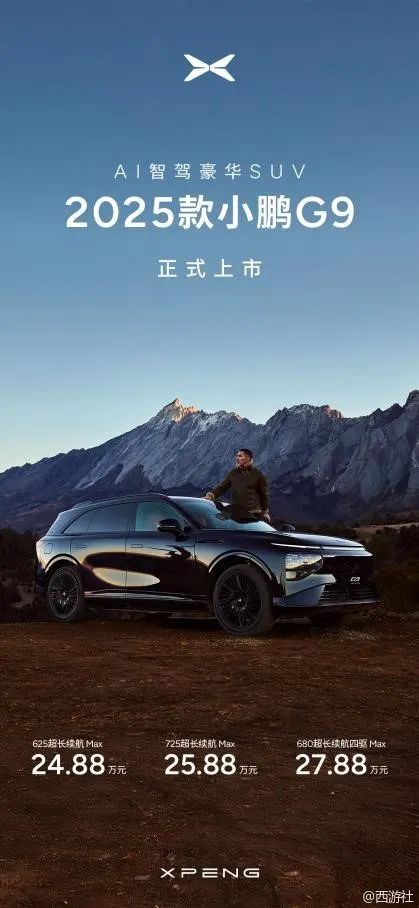
Core Upgrades:
• Dual-chamber air suspension, Nappa leather seats, ten-point massage function, and Qualcomm 8295P chip come standard across all trims, supporting multi-screen linkage.
• New exterior color Starlit Blue and interior color Moon Shadow Brown are introduced, equipped with a three-layer silver-plated heat-insulating canopy (99.99% UV blocking rate).
• Equipped with the Turing AI intelligent driving system with a computing power of 508 TOPS, supporting urban NGP functionality.
Both models now come standard with "exclusive tech" features once reserved for high-end luxury cars—5C supercharging, high-level intelligent driving, and even Nappa leather seats. The G9 series includes the German Vibac dual-chamber air suspension + Bilstein variable damping shock absorber, a combination previously seen only on the BMW X5 and Porsche Cayenne, with a single hardware cost exceeding 30,000 yuan. This "cross-level standard" strategy isn't about undermining the industry's pricing system; it's about redefining it.
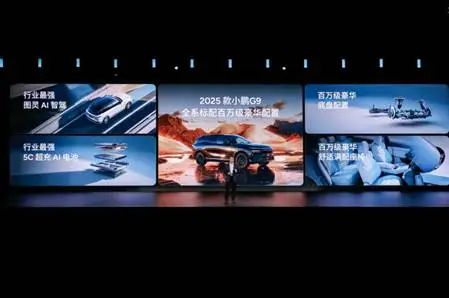
02
High-Level Intelligent Driving: From "Futures" to "Ready-to-Use"
Possessing impressive high-level intelligent driving capabilities determines the market position of a new energy vehicle.
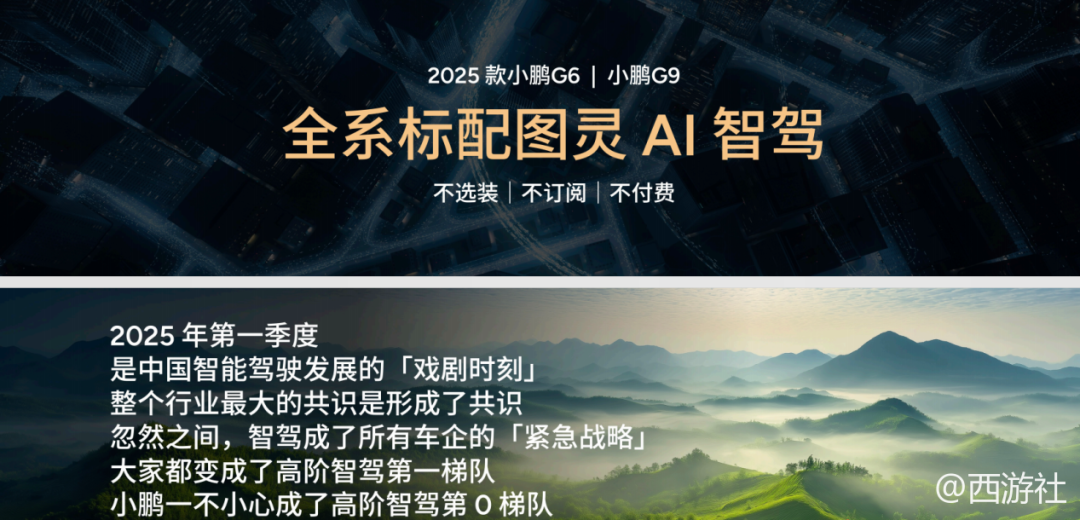
Tesla's strength largely stems from FSD; Huawei's ADS intelligent driving system is a significant factor for those choosing HarmonyOS smart rides; BYD also plans to deploy various levels of "Divine Eye" across most of its models.
While high-level intelligent driving is appealing, it has long been criticized as "paid futures"—users pay for promises and await OTA updates. This time, Xpeng takes a direct approach: enjoy "parking spot to parking spot" full-scenario autonomous driving upon delivery, without optional packages, subscriptions, or additional fees.
End-to-End Large Model
The core of Turing AI intelligent driving lies in the end-to-end large model. In real-world tests during evening rush hour in Guangzhou, the system's success rate in predicting lane-changing vehicles improved by 40% compared to the previous generation, and the braking force was even smoother than human drivers. Even more impressive is the "Campus Roaming" function: without navigation or route memorization, the vehicle automatically recognizes campus roads and navigates, serving as a prototype for L3 autonomous driving.
Hardware Redundancy
Xpeng G6 and G9 forgo LiDAR, adopting a pure vision solution. The secret behind this is algorithmic optimization: visual perception distance increased by 125%, and recognition speed by 40%.

What astounds me further is that the G6 and G9 series come standard with all hardware (chips, cameras, radars) for high-level intelligent driving. Looking at these specification sheets filled with standard features, one word comes to mind—sincerity!
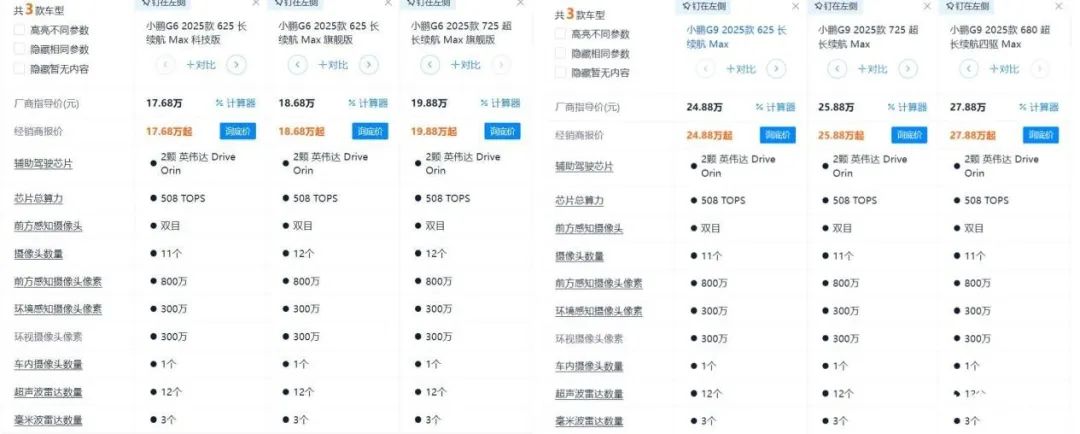
03
What About Competitors?
Market Impact
Firstly, the Xpeng G6 starts at 176,800 yuan, with the top-tier model not exceeding 200,000 yuan, which is 20% cheaper than the base Tesla Model Y and also lower than the Coupe SUV Ledao L60. The Tesla Model Y starts at 263,500 yuan, with an additional 64,000 yuan for FSD, whereas the G6 series comes standard with high-level intelligent driving and offers an extra 145 kilometers of range. Tesla enjoys a loyal fan base and robust electric technology, so it may not feel immediate pressure from the G6. However, how will the Ledao L60 fare now?
The top-tier Xpeng G9 has seen a price drop of 140,000 yuan, now priced at just 278,800 yuan, lower than even the base BMW X3 (starting at 380,000 yuan). This positioning allows it to successfully avoid a head-on collision with Xiaomi, whose upcoming YU7 model it would otherwise compete with. However, the NIO ES6 requires an additional 30,000 yuan for optional air suspension, and Lixiang L7's "refrigerator and TV" have their own pros and cons compared to the G9's ten-point massage seats. Will competitors follow suit with the G9's standard high-level intelligent driving, 5C, and dual-chamber air suspension?
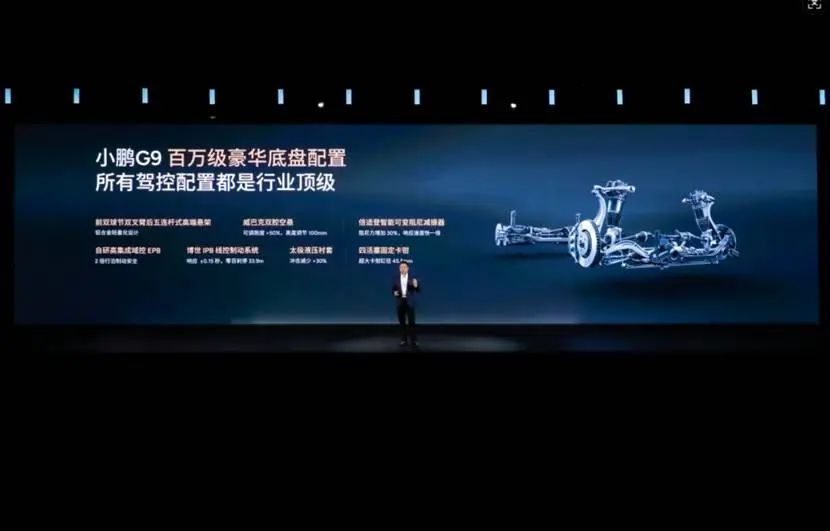
The BMW iX3 offers only 550 kilometers of range but costs 100,000 yuan more than the G9; the Audi Q5 e-tron has a charging speed that is only half that of the G6. When the technological generation gap outstrips the price difference, the moat of brand premium crumbles.
Technology Democratization Drives Industry Upgrades
The standard inclusion of 5C supercharging and dual-chamber air suspension forces competitors to accelerate technology democratization. Sources indicate that BYD and Geely have urgently initiated plans to mass-produce 5C batteries.
The price war dives into "deep waters." The 200,000-yuan market has entered an era of "fully loaded configurations," and brands lacking self-research capabilities will be weeded out. Industry predictions suggest that at least three new entrants will exit the market in 2025 due to their inability to keep pace.
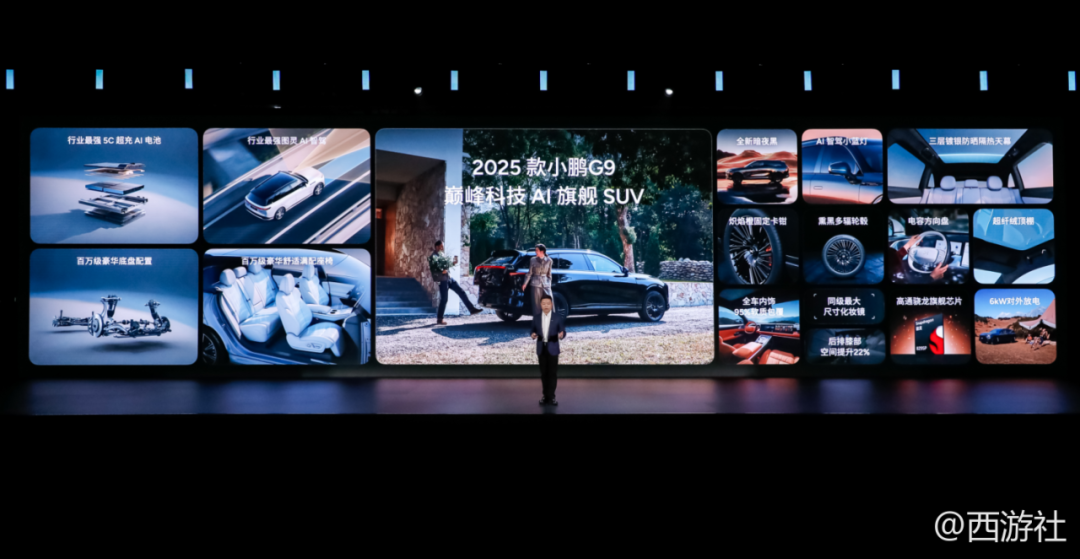
Closing Remarks
Democratization is not the end but the beginning of new rules. The launch of Xpeng G6 and G9 underscores one fact: In the wave of electrification and intelligence, there are no perpetual aristocrats, only those who continuously evolve and adapt.
Xpeng Motors itself seems to be steadily treading the path of "buy with confidence, never feel cheated; choose Xpeng when in doubt."







